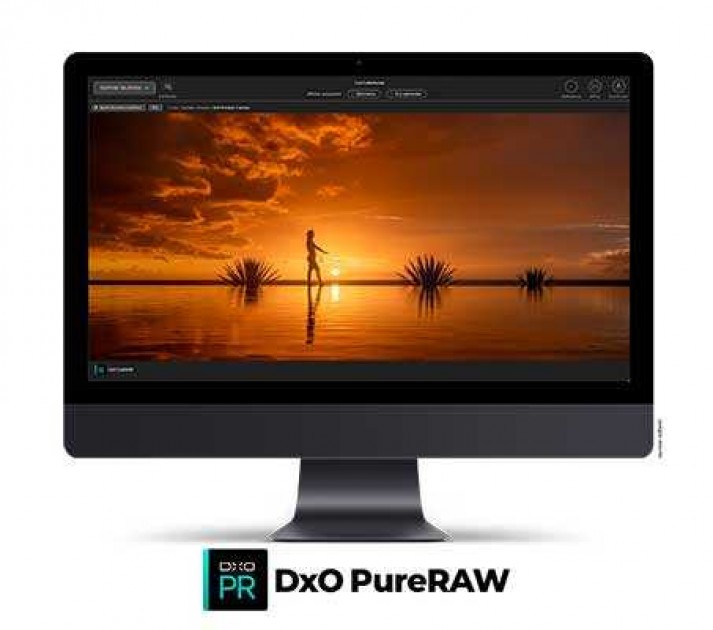Introduction
The Fujifilm X-E4 is a rangefinder-style APS-C sensor mirrorless camera that replaces the previous X-E3 model, which was first introduced back in 2017.
Although they look quite different and occupy different price-points, the new XE4 and the flagship X-T4 camera actually share a lot of similarities.
It is also very similar to the X-Pro3 and the recently introduced X-S10, in that all four cameras use exactly the same image sensor and processor and offer broadly the same core specifications and features – they mainly differ from each other in terms of their user interfaces and styling.
In terms of its marketing position and pricing, the XE4 sits above the older X-T30 and below the new X-S10 and then the flagship X-T4 / X-Pro3 cameras in the current X-series range.
In the UK, the Fujifilm X-E4 is priced at £799 body only or £949 with the new XF 27mm F2.8 R WR prime lens.
In the US, the X-E4 costs $849 body only or $1049 with the XF 27mm F2.8 R WR lens.
Ease of Use
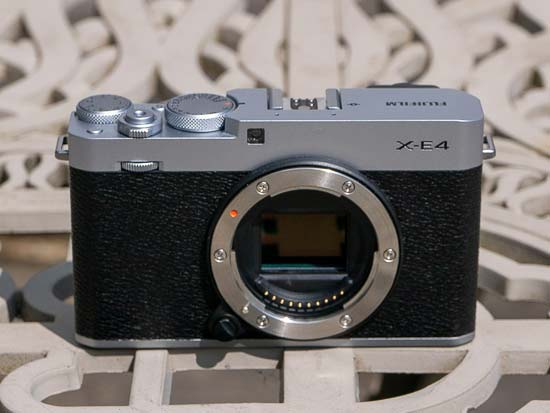 |
The image sensor used in the X-E4, the X-S10, the X-T4 and the X-Pro3 cameras is exactly the same – they all use the very latest 26 megapixel, APS-C sized, BSI X-Trans sensor.
All four cameras also use exactly the same X-Processor 4 processor.
So now Fujifilm are offering you not one, not two, not three, but four different ways to achieve exactly the same image quality.
You can choose between the rangefinder design of the X-Pro3 and X-E4 or the DSLR design of the X-T4 and X-S10, and between the larger X-T4 / X-Pro3 and the smaller X-S10 / X-E4, and still get the same results.
In contrast, the older X-E3 uses the previous generation 24.3 megapixel APS-C sized X-Trans CMOS III sensor and the older X-Processor Pro engine.
The native sensitivity range of the XE4 camera is ISO 160 to ISO 12,800, which can be expanded to ISO 80 to ISO 51,200, whereas the X-E3 has a slightly different standard ISO range of 200-12800 and an expandable sensitivity range that runs from ISO 100-51,200.
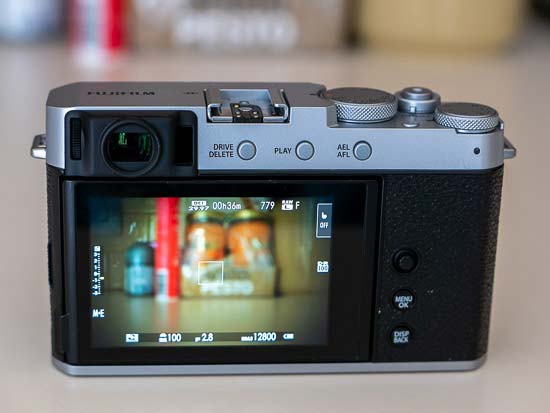 |
Physically, the new XE4 sits sports a classic rangefinder style design that’s outwardly very similar to the X100V fixed-lens camera, just with an electronic viewfinder and an interchangeable lens rather than a hybrid electronic/optical viewfinder and a fixed 28mm lens.
Compared to its predecessor, the three-year-old X-E3, both cameras again look like classic rangefinders from yesteryear, and both look nigh on identical at first glance – but a closer look reveals some important, and in some cases rather baffling, differences.
Weighing in at 364g with a memory card and battery fitted, the XE4 is slightly heavier than than the XE3 by 27g.
It measures 121.3mm × (H) 72.9mm × (D) 32.7mm compared with 121.3mm (W) x 73.9mm (H) x 42.7mm (D), so it’s also 1cm thinner on paper.
This is actually because Fujifilm have decided to remove the small-ish hand-grip that adorned the front of the X-E3 and replace it with a completely flat, albeit textured, front panel on the X-E4 that’s more difficult to get a grip on.
Similarly, the X-E3 had a prominent rest at the rear for your thumb, but again that’s completely disappeared on the X-E4 which has a flat, textured area in its place instead.
 |
There is an optional metal hand-grip for the X-E4 called the MHG-XE4, but fitting that to make up for the lack of built-in grip obviously adds extra cost, weight and complexity.
There’s also a metal thumb rest accessory called the TR-XE4 which slots into the camera’s hotshoe, but again it’s a shame that the camera doesn’t just have one built-in.
Also seemingly in the pursuit of simplicity, Fujifilm have removed the X-E3’s handy M/C/S focus switch from the front panel of the X-E4 – indeed, it has completely disappeared from the external controls entirely, which means that you have to dive into the Quick Menu or the main menu to change it,which is much less convenient.
The only control left on the XE4’s front panel is a rather small control dial for setting the aperture/shutter speed, changing the menu settings, and zooming in and out or scrolling between images during playback.
Keen enthusiasts will expect to find a second control dial on the rear of the camera, but perhaps the biggest change to the way that the X-E4 operates is the rather perplexing omission of a rear control dial, a design feature that we really liked on the X-E3, and which in our view is essential for a “serious” camera.
This surprising omission may have resulted in a cleaner looking rear panel, but it also makes it more difficult to change the key exposure settings, especially when shooting in full Manual mode with a lens that doesn’t have an aperture ring, as the XE4 now only has one control dial on the front.
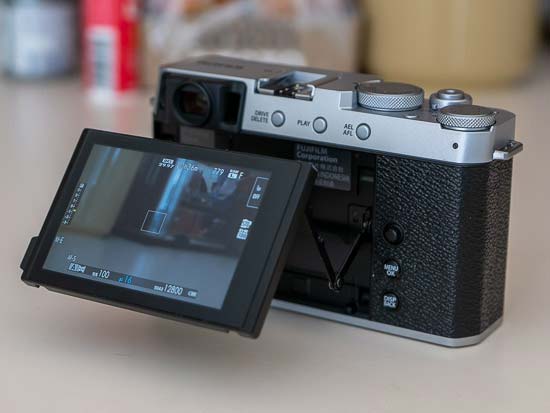 |
In most situations it won’t be a problem – you use the aperture ring on the lens and the shutter speed dial on the top panel to set those key exposure values – but if you’re a fan of using front and rear control dials instead, this really isn’t the camera for you.
The X-S10 would be a much better fit. Instead of the ISO dial, Shutter Speed dial and Exposure Compensation dial found on top of the X-E4, there’s just a customisable Function dial on the left and shooting mode dial on the right of the top of the X-S10, with twin front and rear control dials.
Other key differences between the XE3 and the XE4 include the AF-L button is now shared with the A-EL button, the View Mode button has disappeared completely, and the Playback button has moved up alongside the shared Drive/Delete button.
One other change to the control layout that we do like is the relocation of the Quick Menu button from the rear shoulder of the X-E3 to the top panel of the X-E4, a decision that makes it much less likely for it to be accidentally pressed.
Compared to the X-S10 which is the next model up the range, the X-E4 is about 100g lighter and significantly smaller, but it doesn’t have a hand-grip at all, whereas the X-S10 has an impressively large hand-grip for such a small camera, which is the direct result of the battery being moved into the grip to accommodate its IBIS unit.
It’s the smallest, lightest model of the four X-series cameras that all share the same sensor and processor (the X-E4, X-S10, X-T4 and X-Pro3), so if you want the absolute minimum size and weight, this is the one to pick.
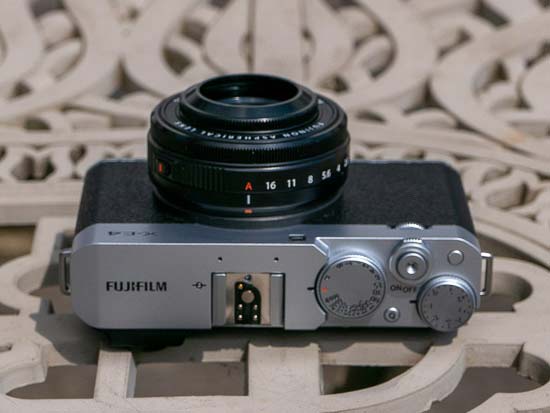 |
Subsequently, its diminutive stature, complete lack of a front or rear grip and its reliance on using the external controls for setting the aperture and shutter speed all combine to make the X-E4 best suited to pairing with smaller prime lenses with aperture rings, rather than larger zooms that can feel more unbalanced on such a small, gripless body.
The larger grip of the X-S10 helps to make that camera much more stable when paired with one of Fujifilm’s zoom or telephoto lenses.
Despite being so small and light, the X-E4 offers a very impressive level of build quality – much better than the X-T200, for example – something that you wouldn’t perhaps expect from what is after all an £$800 camera.
The Fujifilm XE4 is very well-built, with little movement in its chassis and a top plate that has been carefully molded with extreme precision from magnesium. Most of the external controls are obviously made from plastic, though, which you may not like given the more mid-range price tag that the X-E4 has.
The other main concession to the more aggressive price-point from a build quality point of view is the complete lack of any weather-sealing – if this is a must-have feature, then you’ll need to step-up considerably to the X-T4 (the X-S10 isn’t weather-sealed either).
The other main concession is the lack of IBIS on this camera. Just like its predecessor, neither the X-E3 or the X-E4 feature in-body stabilisation, instead relying on the lens to supply this feature, which is less effective than a dual body/lens combination and obviously relies on the lens having it built-in.
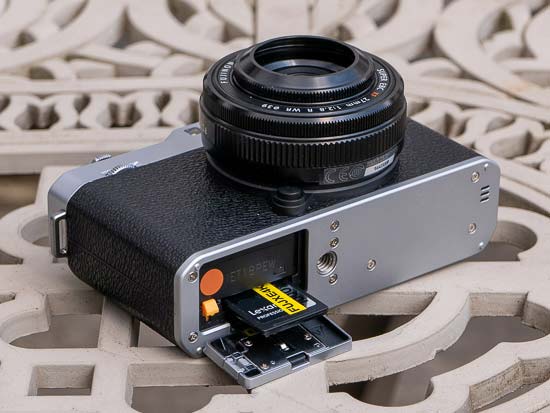 |
If you really want to have IBIS you’ll need to use the X-E4 with a stabilised lens, and for the most effective stabilisation system overall, you’ll need to at least step up to the X-S10 model, which is currently the cheapest X-series body to have in-body stabilisation.
The layout of the top panel of the X-E4 is very similar to its predecessor, with a couple of differences.
So it has the same Shutter Speed dial and Exposure Compensation dial which adorned the top of the X-T4 – note that there is a new Program (P) setting on the Shutter Speed dial in addition to the Auto (A) setting, useful if fully automatic functionality is required.
The X-E4 no longer has the Auto mode selector lever for selecting the fully-automatic Advanced SR Auto mode where the camera chooses the optimum settings for a given scene, as this particular shooting mode has been completely removed from the X-E4.
Instead, the Q button has been relocated here rather than being at the rear-corner of the camera as on the X-E3.
The XE4 continues to lack a dedicated ISO speed dial – instead, you have to either dip into the Quick menu, which despite its name isn’t quite as quick as using a dedicated dial, or press the unmarked configurable Function button next to the shutter release, which by default accesses the ISO settings.
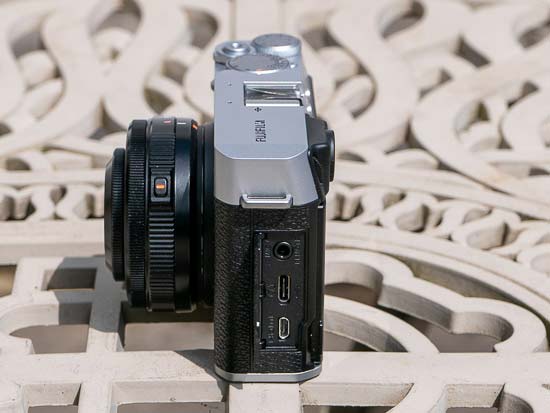 |
The X-E4 impressively offers no less than seven Custom shooting modes, and even better than that, you can choose to store AF/MF and shooting settings in each mode as well as the image quality setting, making it easy to setup different custom modes for different shooting scenarios/techniques.
Note that this only works for stills, not movies, though, and perhaps more annoyingly you have to dive into the main menu system to be able to access them using the Select Custom Setting option, or assign it to a function button for easier access.
Fujifilm have made some improvements on the XE4 to their almost legendary range of film simulation modes, now providing 18 different looks in total.
The new Eterna Bleach Bypass film simulation that first made its debut on the X-T4 has also now been included on the X-E4 for both stills and video, as well as the Color Chrome Effect,Color Chrome FX Blue and the Clarity settings that all the other X-Trans IV sensor cameras have.
This is principally aimed at videographers who want a similar look to films like Seven, Saving Private Ryan and Fight Club, providing a hard tonality to the footage.
The X-E4 offers 8fps continuous shooting when using the manual shutter for 105 JPEGs or 23 compressed RAW files, increasing to 20fps when switching to the electronic shutter without any crop, or 30fps with a 1.29x crop applied, all with auto focus and exposure for every frame.
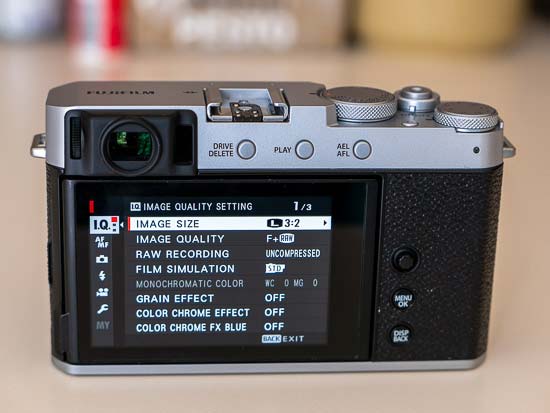 |
The X-3 could also shoot at 8fps with the mechanical shutter, but only up to 62 JPEG or 25 Raw files, and it was much more limited when using its electronic shutter, topping out at 14fps with the focus and exposure locked at the first frame of the sequence.
Somewhat disappointingly, the X-E4 and X-E3 share exactly the same 2.36M-dot OLED electronic viewfinder with 0.62x magnification, 100fps refresh rate and a built-in eye sensor. It’s exactly the same as the one found in the X-T30 and X-S10.
Positioned over to the far-left of the camera, this is a major difference to the X-S10’s centrally located viewfinder, so that may be an important reason to choose one model over the other.
On a more positive note, though, the LCD screen has seen a big upgrade. Not only does it have a higher resolution than the X-E3 – 1.62M-dots versus 1.04M-dots – more importantly it is no longer fixed in place.
Instead it has a double hinged design that allows it to be tilted forwards by 180-degrees, which makes it ideal for vlogging and taking selfies, waist-level photos, shooting above your head, and movie recording.
Unlike on the X-S10 camera, though, you can’t tilt it out to the side or fold against the back of the camera to help protect it when not in use.
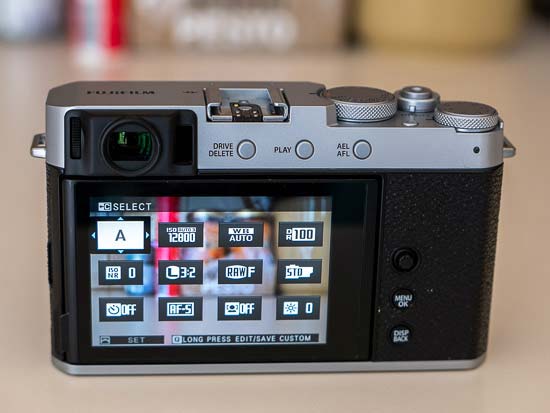 |
It also has a very slim profile, much like the screen on the X100V, which means that it lies flush against the back of the camera rather than protruding slightly as on the X-E3.
Once again the LCD screen is touch-sensitive, so you can take a shot, focus on a subject and set the AF area all by using your forefinger, as well as use the Quick Menu (but curiously not also the Main Menu) and swipe through images and zoom in and out during playback.
On the right-hand side of the screen you’ll see a small icon which if you press allows you to choose between using the screen to set AF point, or to have it focus and then take a picture. If you prefer, you can turn off this functionality altogether, but it’s much quicker than using the buttons to set the point.
Furthermore, you can actually change the focus point whilst holding the camera up to your eye by dragging across the touchscreen with your right thumb. Again, it’s a little tricky to get it right at first, but persevere and it soon becomes more natural, if not quite second nature.
The X-E4 has a pretty good movie mode that more than holds its own against its main rivals.
It oversamples 6k footage to offer a highest quality rate of DCI 4K/30p with no crop recorded in 4:2:0 8-bit internally and 4:2:2 10-bit via the micro-HDMI port to an external recorder.
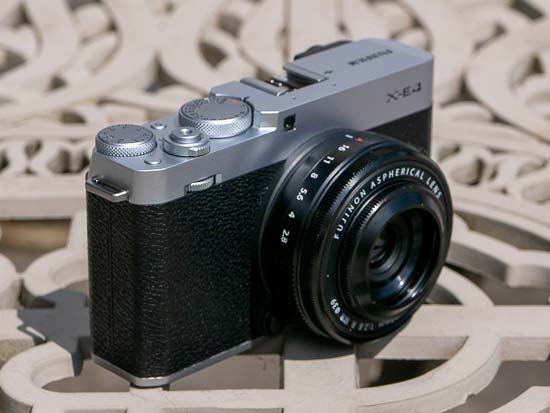 |
The F-Log profile is available as well as the Eterna film simulation, the maximum bitrate is 200Mbps, and the movie compression format is Long GOP only, with no All Intra option.
The maximum recording time is 30 minutes, which is actually 10 minutes longer than on the flagship X-T4.
The Fuji XE4 also has the 1080p/240p 10x slow-motion mode, first seen on the X-T4, and the same digital image stabiliser which works in conjunction with the in-camera and lens-based systems.
Other key video features include IS Mode Boost, different Main menu and Quick menu systems for stills and video modes, a 3.5mm MIC socket and a USB-C to headphone adapter provided in the box.
Finally the X-E4 has a new video feature inherited from the X-S10 – a count-up clock that displays the card capacity in hours and minutes when the camera is in Standby mode, which switches to showing the recording time in minutes and seconds in the Record screen.
Note that there’s no one-touch movie record button on this camera. Instead you have to go into the Drive menu via the button on the rear panel and select the Movie option right at the bottom of the list.
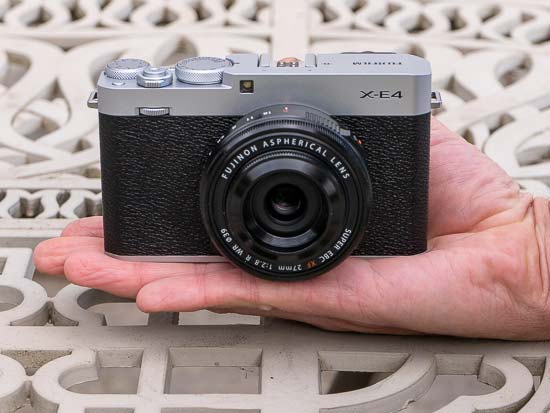 |
So the main differences between the XE4 and the flagship X-T4’s video mode are the maximum frame rate in 4K – 30fps versus 60fps -, the movie compression – Long GOP versus Long GOP/All Intra -, the internal bit rate – 8-bit versus 10-bit -, and the recording time – 30 mins versus 20 mins.
The new X-E4 has exactly the same hybrid autofocus system with phase detection and and contrast detections points as the X-T4, X-Pro3 and X-S10, which is far more advanced than the AF system on the X-E3.
In the Single point AF mode there are up to 425 selectable AF points arranged in a 25×17 grid. Alternatively, the camera can be set to 117 points in a 13×9 grid, and the size of the points can also be varied.
In addition to Single point AF, there’s Zone AF which allows the AF points to be selected in 3×3, 5×5 or 7×7 groups, and Wide/Tracking AF.
Autofocus capability in low light is also significantly improved, with the camera able to focus down to -7EV just like in the X-T4, compared to a still impressive -4EV on the X-E3.
Perhaps unsurprisingly given its size and just like its predecessor, the Fujifilm X-E4 only has a single SD UHS-II memory card slot, rather than dual card slots. The memory card slot is rather inconveniently located next to the battery in a shared compartment on the bottom of the camera.
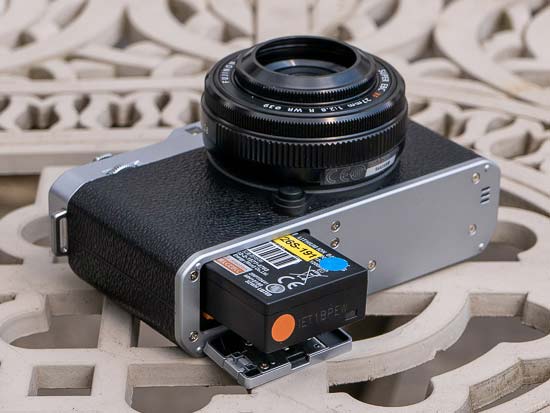 |
The Fujifilm X-E4 uses exactly the same NP-126S battery as the X-E3, rather than the larger capacity NP-W235 battery used by the X-T4 model.
This offers a CIPA-rated battery life of up to 460 shots on a single charge in normal mode, over 100 more than the X-E3, and 600 shots in the ‘economy’ mode.
The XE4 can also be powered and charged via a USB-C connection, which is useful if you’re out and about and have a compatible powerbank to plug the camera into, a feature that the older XE3 doesn’t offer.
Just like its predecessor, the new X-E4 offers Bluetooth connectivity in addition to the now ubiquitous Wifi. You can use this feature to connect the X-E4 to a smartphone, even when the camera is turned off, and automatically transfer images from for backup or more probably sharing via your social network of choice.
A metal tripod mount is positioned slightly off-centre from the lens and next to the battery/memory card compartment, so you’ll have to remove the camera from the tripod to change the battery or the memory card.
Image Quality
All of the sample images in this review were taken using the 26.1 megapixel Raw + Fine JPEG setting, which gives an average image size of around 55Mb and 10Mb respectively.
With an identical sensor to the Fujifilm X-T4, the X-E4 boasts similarly outstanding image quality.
The native sensitivity range is ISO 160 to ISO 12,800, which can be expanded to ISO 80 to ISO 51,200.
In JPEG images there is no visible sign of noise all the way up to ISO 6400, which is mightily impressive for an APS-C sensor.
The impact of noise at ISO 12,800 is seen through a minor colour desaturation and smudged detail in shadow areas.
The extended high settings of ISO 25,600 and ISO 51,200 progressively exhibit more noise but those images are still useable.
We like the application of noise reduction in those JPEG images – it’s not too heavy handed so as to overly smudge detail.
In RAW files where no noise reduction is applied, noise is more evident but images still look pretty clean up to ISO 12,800.
We would happily shoot the entire native ISO range in RAW and JPEG and it’s not often that we could say that about a camera.
Elsewhere, we love the Fujifilm colour science. The sensor of the XE4 uses a different colour array to other brands and the results are lovely, especially when you factor in the choice of Fujifilm’s film simulation for different colour effects. Provia is the standard mode and we are partial to the Eterna Cinema mode.
Noise
There are 11 ISO settings available for the Fujifilm X-E4 for RAW and JPEG files. Here are some 100% crops which show the levels of noise for each ISO setting.
| JPEG | RAW |
|
ISO 80 (100% Crop) |
ISO 80 (100% Crop) |
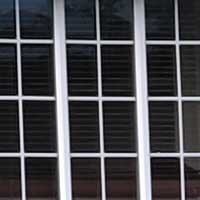 |
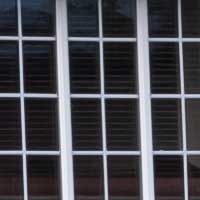 |
|
ISO 160 (100% Crop) |
ISO 160 (100% Crop) |
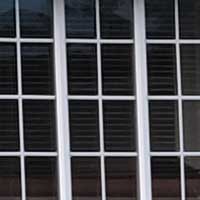 |
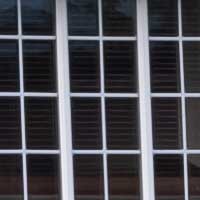 |
|
ISO 200 (100% Crop) |
ISO 200 (100% Crop) |
 |
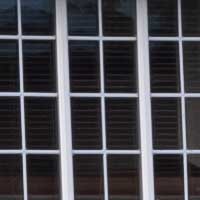 |
|
ISO 400 (100% Crop) |
ISO 400 (100% Crop) |
 |
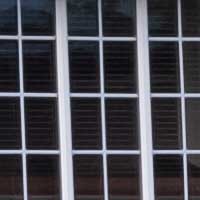 |
|
ISO 800 (100% Crop) |
ISO 800 (100% Crop) |
 |
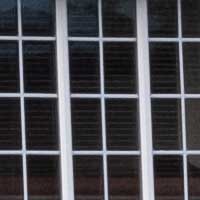 |
|
ISO 1600 (100% Crop) |
ISO 1600 (100% Crop) |
 |
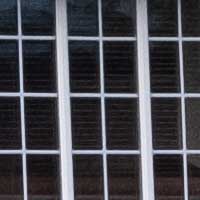 |
|
ISO 3200 (100% Crop) |
ISO 3200 (100% Crop) |
 |
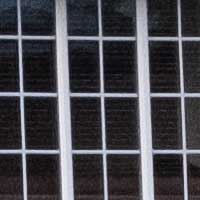 |
|
ISO 6400 (100% Crop) |
ISO 6400 (100% Crop) |
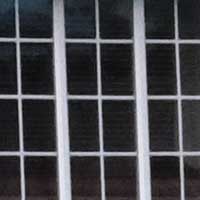 |
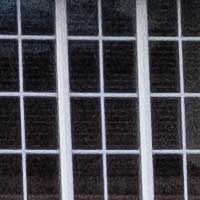 |
|
ISO 12800 (100% Crop) |
ISO 12800 (100% Crop) |
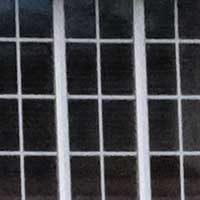 |
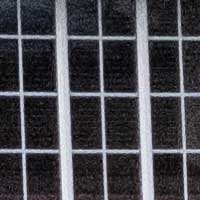 |
|
ISO 25600 (100% Crop) |
ISO 25600 (100% Crop) |
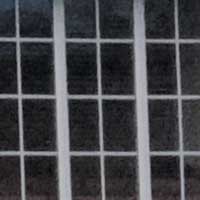 |
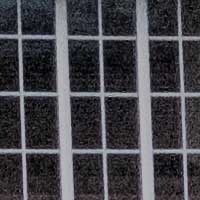 |
|
ISO 51200 (100% Crop) |
ISO 51200 (100% Crop) |
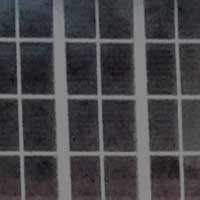 |
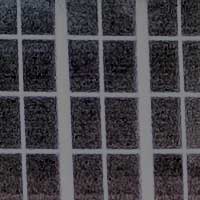 |
File Quality
The Fujfilm X-E4 shoots in RAW and JPEG with two quality settings; Fine and Normal . Here are 100% crops of those three options with the files size shown in brackets.
| Fine (13.7Mb) (100% Crop) | Normal (8.37Mb) (100% Crop) |
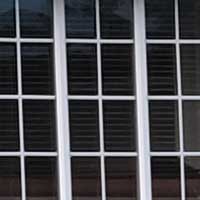 |
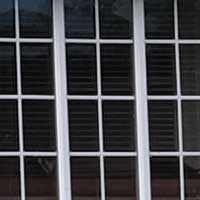 |
| RAW (55.7Mb) (100% Crop) | |
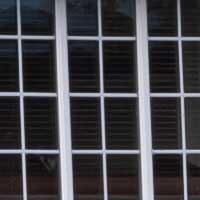 |
Night
Set the shutter speed dial to its S position (Shutter Speed Priority) and shutter speeds up to 15 minutes are available.
Combined with such a good control over noise, the X-E4 is an excellent night shooter.

Dynamic Range
A dynamic range (DR) boost is always on, with a choice between auto, 100%, 200% and 400%. We taken have identical images going through this range of settings and the visible difference of detail in the extreme shadow and highlights areas is actually rather subtle. As such, for the most part we kept DR in the auto setting.
There is also a HDR option with options of Auto, 200%, 400%, 800% and 800%+. Multiple images are recorded and combined into one final image of greater dynamic range. With both IBIS and OIS active and rapid multi-frame capture, it is entirely possibly to use the HDR mode handheld (depending on your shutter speed).
Film Simulations
There are 12 different film simulation modes, two of which (Acros and Black & White) have several sub-options.
|
Provia / Standard |
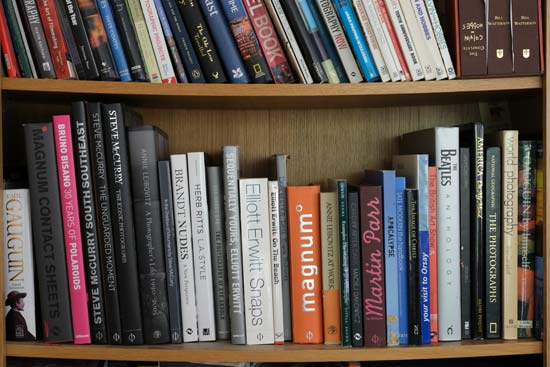 |
|
Velvia / Vivid |
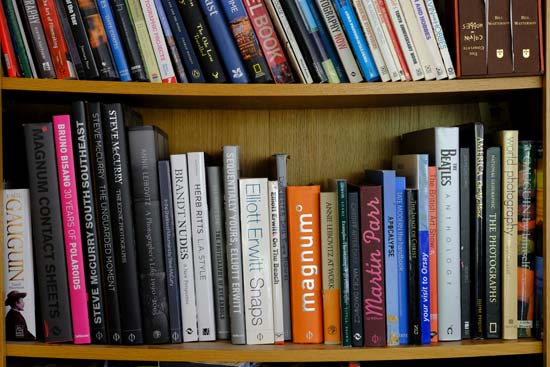 |
|
Astia / Soft |
 |
|
Classic Chrome |
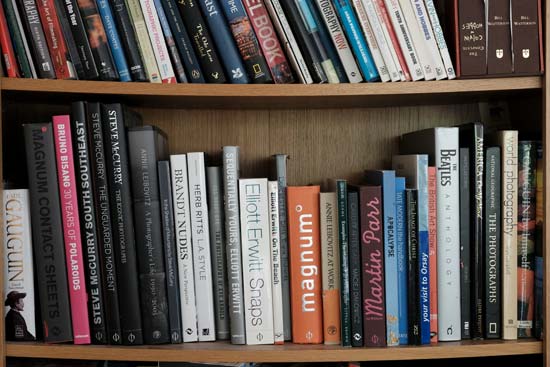 |
|
Pro Neg Standard |
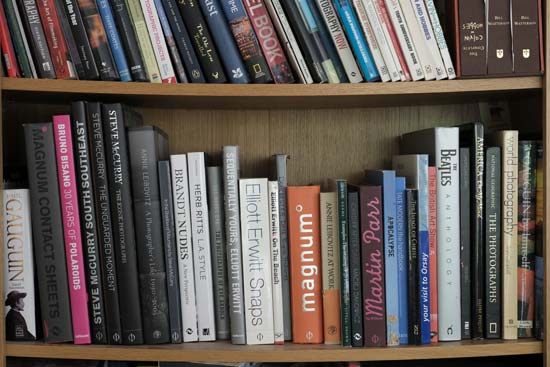 |
|
Pro Neg Hi |
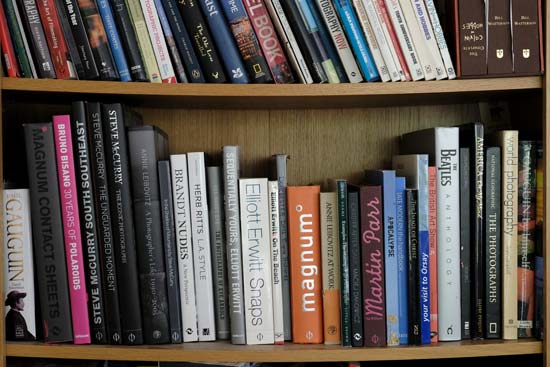 |
|
Classic Neg |
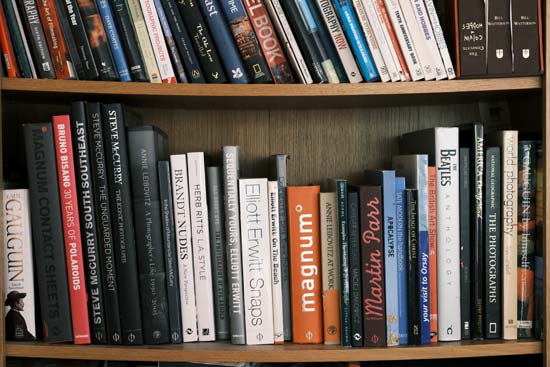 |
|
Eterna |
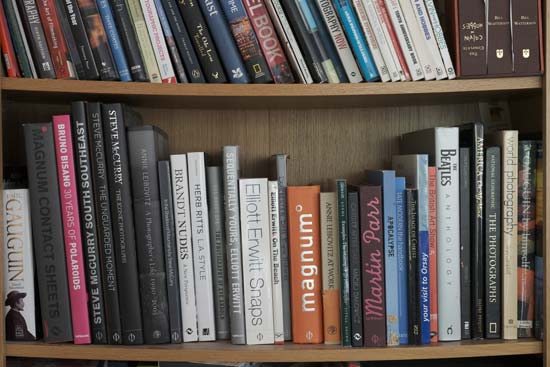 |
|
Eterna Bleach Bypass |
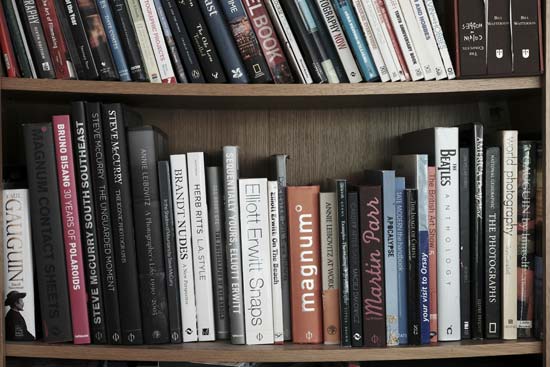 |
|
Acros |
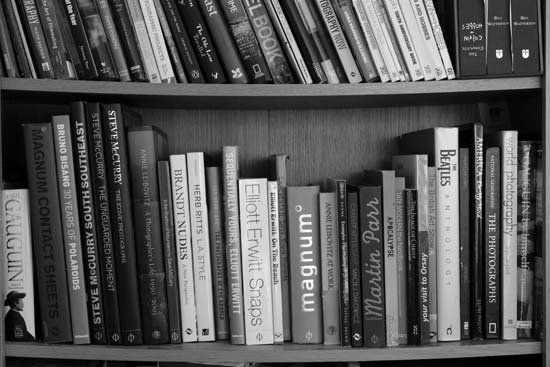 |
|
Monochrome |
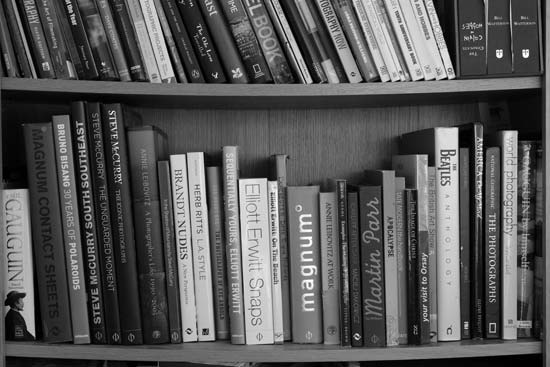 |
|
Sepia |
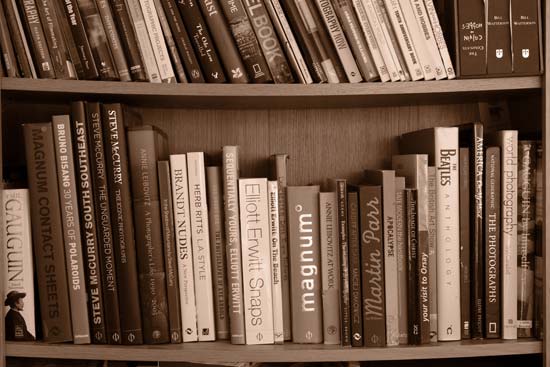 |
Advanced Filters
There are 13 different filter effects (six of which are partial colour effects) that are visible on screen when the Advanced Filter mode is active. From Toy Camera to High-Key and Low-Key, we’ve included these 13 effects below.
Sample Images
This is a selection of sample images from the Fujifilm X-E4 camera, which were all taken using the 26 megapixel Fine JPEG setting. The thumbnails below link to the full-sized versions, which have not been altered in any way.
Sample RAW Images
The Fujifilm X-E4 enables users to capture RAW and JPEG format files. We’ve provided some Fujifilm RAW (RAF) samples for you to download (thumbnail images shown below are not 100% representative).”
Product Images

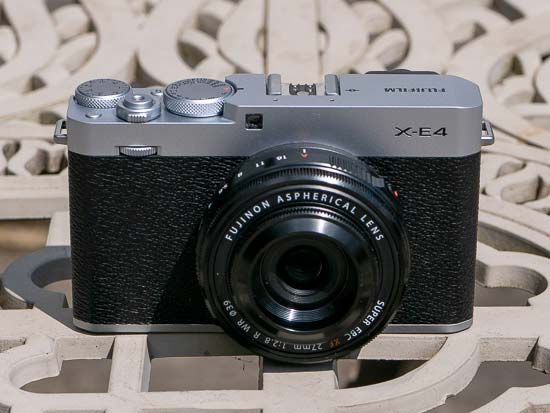
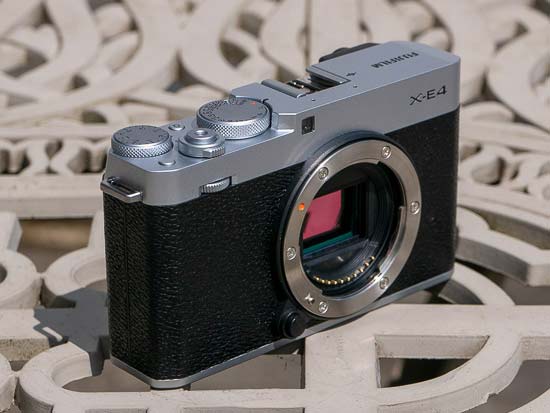

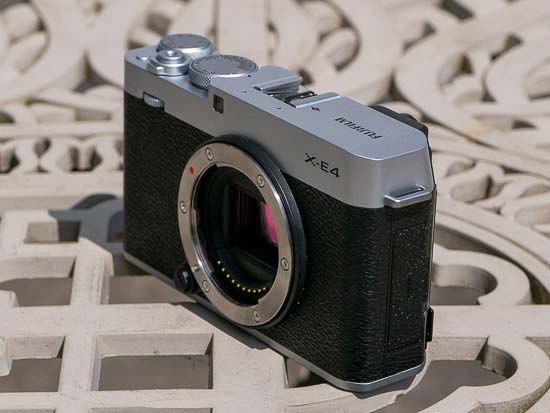
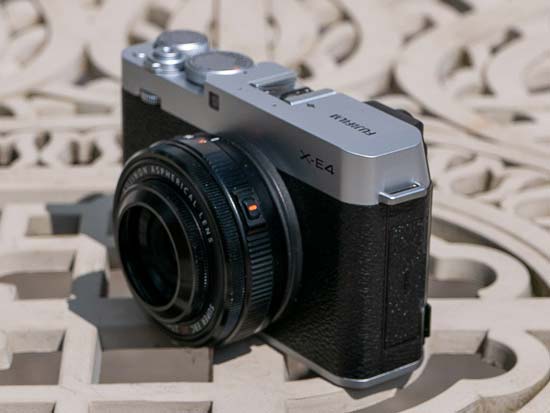
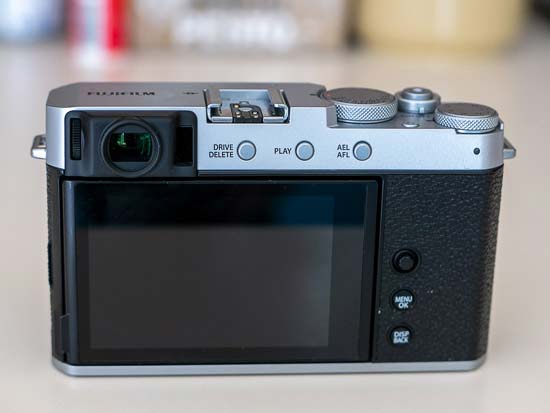

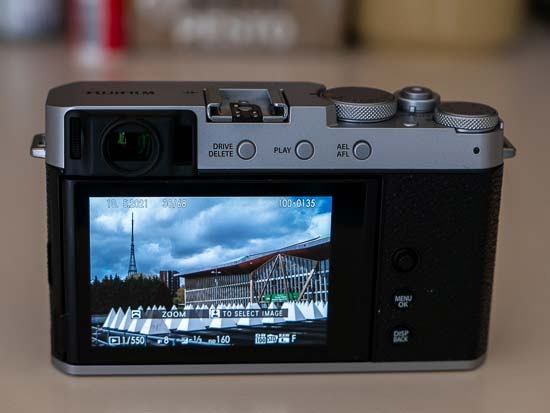


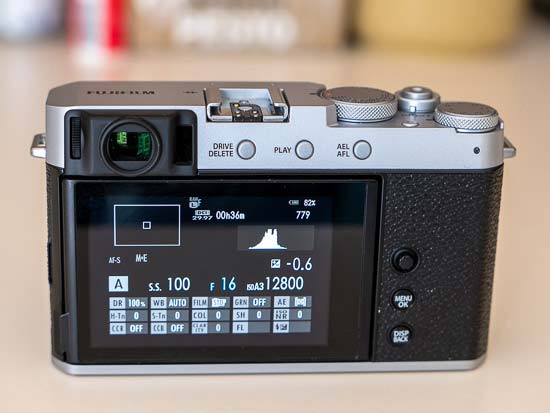

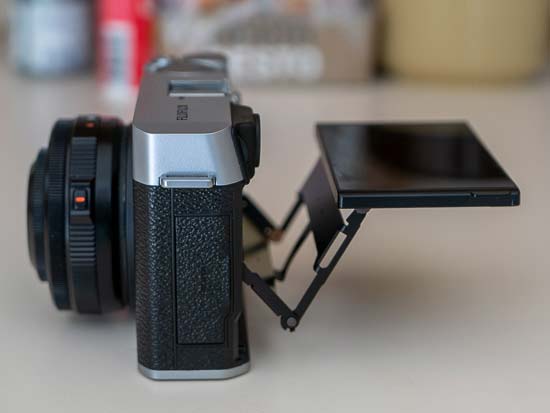
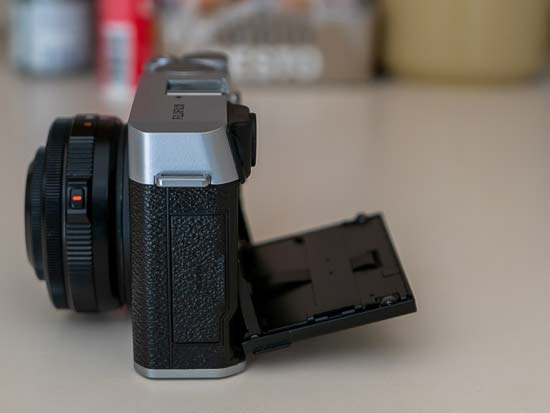



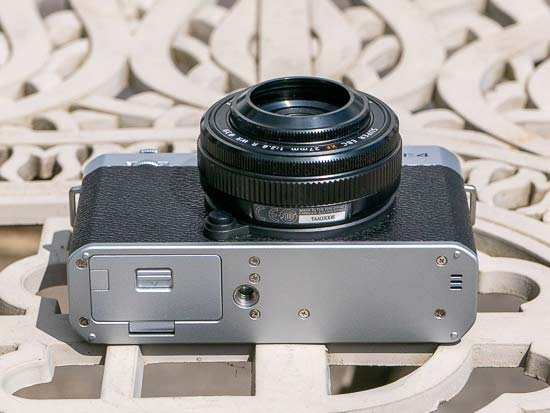
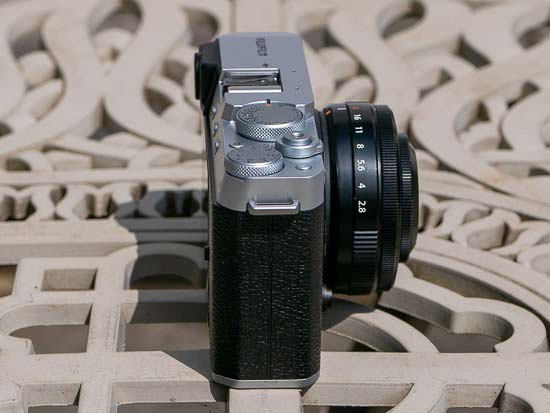
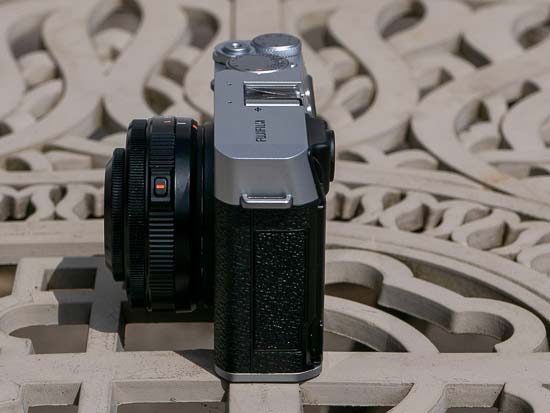




Conclusion
As the cheapest way to buy into Fujifilm’s best image quality, fastest processing and latest feature-set, the new X-E4 camera is instantly worth considering, especially as it is also beautiful to look at thanks to a pared-back redesign of its user interface.
It’s also the smallest and lightest camera to feature Fuji’s latest 4th-generation 26 megapixel, APS-C sized, BSI X-Trans sensor and X-Processor 4 processor, so if you want the latest tech inside the most portable body, this is the model to go for.
The fact that the X-E4 costs roughly half as much as an X-T4 and yet delivers the same image quality and performance and most of the same features is another big reason to consider this camera.
It also makes a lot of sense as an interchangeable lens alternative to the X100V fixed-lens camera, which the X-E4 very closely resembles in it design ethos.
It’s not all good news, though, as the simplification of the control layout and the reduction in size compared to the previous X-E3 has resulted in a camera that’s less easy-to-use and less intuitive than its predecessor.
From the complete thank of a hand- and thumb-grip to the lack of a second control dial and the reduced number of external controls which place more emphasis on using the menu system, it’s clear that while the X-E4 is undoubtedly more pleasing on the eye than the X-E3, it’s also more difficult to use, especially true if you’ve spent a lot of time using the X-E3.
The small size and low weight of the X-E4, coupled with not having a hand-grip of any kind, make it best suited to being paired with Fuji’s smaller lenses, like their excellent range of fast primes, rather than the heavier zooms and telephoto lenses.
That isn’t to say that you should entirely ignore the new XE4, more that you should be aware of the limitations that have been newly introduced.
Whilst existing X-E3 owners who had hoped to upgrade to the latest tech in the same proven body may feel somewhat disgruntled by the handling changes that Fuji have made, the XE4 is still a mid-range camera with a high-end fit and finish that provides the very best imaging technology that Fujifilm currently offer – for those three key reasons alone, it’s well worth considering.
| Ratings (out of 5) | |
|---|---|
| Design | 4 |
| Features | 4.5 |
| Ease-of-use | 3.5 |
| Image quality | 5 |
| Value for money | 4 |
Main Rivals
Listed below are some of the rivals of the Fujifilm X-E4.
The Canon EOS M6 Mark II is a new mid-range mirrorless camera with a 32 megapixel APS-C sensor, 4K video recording, 14fps burst shooting, a tilting touchscreen and optional electronic viewfinder. Can it beat the likes of the Sony A6400 and Fujifilm X-T30 cameras? Find out now by reading our Canon EOS M6 Mark II review…
The Fujifilm X-E3 is a stylish rangefinder-esque digital camera that comes across like a mini X-Pro2 with a wealth of smartphone touch and connectivity options. Read our Fujifilm XE3 review to find out if this mix of retro and modern is a successful one or not…
The Fujifilm X-S10 mirrorless camera aims to bring the renowned X-series image quality and colour science to a wider audience by being smaller, easier to use and cheaper than the company’s flagship cameras. Does it strike the right balance between simplicity and accessibility? Find out now by reading our in-depth Fuji XS10 review…
Bridging the gap between complete photography beginner and more experienced enthusiast has often proved to be a tricky task for camera manufacturers. The new Fujifilm X-T200 aims to do exactly that, sitting between the entry-level X-A7 and the higher-end X-T30 in Fuji’s mirrorless camera range. Does it succeed in appealing to two quite different kinds of user? Find out now by reading our in-depth Fujifilm X-T200 review, complete with full-size sample images and videos.
The Fujifilm X-T3 is the successor to our Compact System Camera of the Year 2016 award winner, the popular X-T2. Can this new model really improve on what was already an outstanding camera? Find out now by diving into our in-depth Fujifilm X-T3 review…
Dubbed the Little Giant by Fujifilm, the new X-T30 mirrorless camera takes most of the things that we loved about the flagship X-T3 and packages them into a smaller, lighter body. It even has a few tricks up its sleeve that the X-T3 doesn’t currently offer, most notably a more advanced auto-focusing system. Read our Fujifilm X-T30 review to find out how it compares to the X-T3 and the previous X-T20, and why you should definitely consider buying this new mid-range mirrorless camera…
The Fujifilm X-T4 is the successor to the very popular X-T3, which was released in 2018, principally adding in-body image stabilisation, greatly improved battery life, a quicker and quieter mechanical shutter, enhanced continuous AF and a number of design tweaks. Can the new X-T4 improve on what was already an outstanding camera? Find out now by reading our in-depth Fujifilm X-T4 review…
As its name suggests, the new X100V represents the fifth generation of Fujfilm’s now classic 35mm fixed lens premium compact camera series. The new Fuji X100V uses exactly the same 26 megapixel sensor and X-Processor 4 as the rest of the latest X-series cameras, and also adds weather-proofing, a revised lens design, tilting LCD touchscreen and 4K video recording into the rich mix. Read our in-depth Fujifilm X100V review now, complete with full-size sample images and videos…
Nikon have introduced their first APS-C, cropped-sensor mirrorless camera with the launch of the Z50, accompanied by two kit zoom lenses. Can the Z50 take on the likes of the well established Sony A6000-series and Canon EOS-M range, not to mention Fujifilm with its line-up of excellent APS-C bodies and lenses? Find out now by reading our in-depth Nikon Z50 review.
The mid-range interchangeable lens camera market is fiercely fought, with a huge array of formats on offer from all the major camera manufacturers. Enter stage left Panasonic with the new Lumix G90 / G95, a camera that aims to satisfy both photographers and videographers alike. Can it pull off this tricky feat? Read our in-depth Panasonic Lumix G90 / G95 review to find out…
The Sony A6400 is a new mirrorless camera with an APS-C size sensor and a cutting-edge auto-focusing system. With 24.2 megapixels, 4K movie recording, a touchscreen 180-degree LCD touchscreen, 11fps burst shooting, electronic viewfinder, built-in flash, and Wi-fi / Bluetooth / NFC connectivity, is this the best APS-C camera on the market? Read our Sony Alpha A6400 review to find out…
Review Roundup
Reviews of the Fujifilm X-E4 from around the web.
The Fujifilm X-E4 is a lightweight, rangefinder-styled camera built around a 26MP APS-C sized sensor that uses the company’s X-mount lineup of lenses. Billed as a fun-to-use and compact photographic companion, the X-E4 is the smallest X-mount camera on the market, encouraging you to keep it around wherever you go.
Read the full review »
While its small size and design doesn’t make it quite as versatile as a camera like the X-T4, the Fujifilm X-E4 is capable of producing the same quality images and it’s easy to carry everywhere. It would be ideal as a travel camera with Fujifilm’s smaller prime lenses or zooms.
Read the full review »
Will they or won’t they? This was the question fans of Fujifilm’s X-series were asking for quite some time about whether the manufacturer would continue its X-E series, or pull the plug and focus on its other popular X-series cameras instead.
Read the full review »
Specifications
| Model name | FUJIFILM X-E4 | |
| Number of effective pixels | 26.1 millions pixels | |
| Image sensor | 23.5mm x 15.6mm (APS-C) X-Trans CMOS 4 with primary color filter | |
| Sensor Cleaning System | Ultra Sonic Vibration | |
| Storage media | SD Card (~2GB) / SDHC Card (~32GB) / SDXC Card (~2TB) | |
| UHS-I *1 | ||
| File format of still image | Compliant with Design rule for Camera File system (DCF2.0) JPEG: Exif Ver.2.32 *2 RAW: 14bit RAW (RAF original format) |
|
| Number of recorded pixels | [L]<3:2> 6240 × 4160 <16:9> 6240 × 3512 <1:1> 4160 × 4160 | |
| [M]<3:2> 4416 × 2944 <16:9> 4416 × 2488 <1:1> 2944 × 2944 | ||
| [S]<3:2> 3120 × 2080 <16:9> 3120 × 1760 <1:1> 2080 × 2080 | ||
| Panorama | [L]9600 x 2160 [L]9600 x 1440 | |
| [L]6400 x 2160 [M]6400 x 1440 | ||
| Lens Mount | FUJIFILM X mount | |
| Image Processing Engine | X-Processor 4 | |
| Sensitivity | Still Image | [Standard Output]AUTO1 / AUTO2 / AUTO3 / ISO160~12800 (1/3 step) |
| [Extended Output]ISO80 / 100 / 125 / 25600 / 51200 | ||
| Movie | [Standard Output]AUTO / ISO160~12800 (1/3 step) | |
| [Extended Output]ISO25600 | ||
| Exposure control | TTL 256-zone metering, Multi / Spot / Average / Center Weighted | |
| Exposure mode | P (Program AE) / A (Aperture Priority AE) / S (Shutter Speed Priority AE) / M (Manual Exposure) | |
| Exposure compensation | -5.0EV – +5.0EV 1/3EV step (Movie: -2.0EV – +2.0EV) | |
| Shutter type | Focal Plane Shutter | |
| Shutter speed | Mechanical shutter | P mode: 4sec. to 1/4000sec. A mode: 30sec. to 1/4000sec. S/M mode: 15min. to 1/4000sec. Bulb mode: up to 60min. |
| Electronic shutter*3 | P mode: 4sec. to 1/32000sec. A mode: 30sec. to 1/32000sec. S/M mode: 15min. to 1/32000sec. Bulb mode: 1sec. Fixed | |
| Mechanical + Electronic shutter*3 | P mode: 4sec. to 1/32000sec. A mode: 30sec. to 1/32000sec. S/M mode: 15min. to 1/32000sec. Bulb mode: up to 60min. | |
| Movie | DCI4K/4K: 1/4000sec. to 1/24 sec. FHD: 1/4000sec. to 1/24 sec. *Cannot choose slower shutter speed than framerate. |
|
| Synchronized shutter speed for flash | 1/180sec. or slower | |
| Continuous shooting | Approx. 30fps [Only electronic shutter, 1.25 x Crop ](JPEG: 29 frames Lossless compressed RAW: 17 frames Compressed RAW: 17 frames Uncompressed RAW: 17 frames) | |
| Approx. 20fps [Only electronic shutter, 1.25 x Crop ](JPEG: 79 frames Lossless compressed RAW: 17 frames Compressed RAW: 20 frames Uncompressed RAW: 17 frames) | ||
| Approx. 10fps [Only electronic shutter, 1.25 x Crop ](JPEG: 153 frames Lossless compressed RAW: 18 frames Compressed RAW: 26 frames Uncompressed RAW: 18 frames) | ||
| Approx. 20fps [Only electronic shutter ](JPEG: 32 frames Lossless compressed RAW: 17 frames Compressed RAW: 17 frames Uncompressed RAW: 17 frames) | ||
| Approx. 10fps [Only electronic shutter ](JPEG: 81 frames Lossless compressed RAW: 18 frames Compressed RAW: 21 frames Uncompressed RAW: 18 frames) | ||
| Approx. 8.0fps (JPEG: 105 frames Lossless compressed RAW: 18 frames Compressed RAW: 23 frames Uncompressed RAW: 18 frames) | ||
| Approx. 5.0fps (JPEG: 458 frames Lossless compressed RAW: 24 frames Compressed RAW: 46 frames Uncompressed RAW: 19 frames) | ||
| Approx. 4.0fps (JPEG: endless frames Lossless compressed RAW: 28 frames Compressed RAW: 107 frames Uncompressed RAW: 20 frames) | ||
| Approx. 3.0fps (JPEG: endless frames Lossless compressed RAW: 34 frames Compressed RAW: 480 frames Uncompressed RAW: 21 frames) | ||
| Pre-shot: Approx. 30fps [Only electronic shutter, 1.25 x Crop ] (max. 10 frames while half press, max. 15 frames after full press, total max. 25 frames) | ||
| Pre-shot: Approx. 20fps [Only electronic shutter, 1.25 x Crop ] (max. 10 frames while half press, max. 48 frames after full press, total max. 58 frames) | ||
| Pre-shot: Approx. 10fps [Only electronic shutter, 1.25 x Crop ] (max. 10 frames while half press, max. 110 frames after full press, total max. 120 frames) | ||
| *Recordable frames depends on recording media | ||
| *Speed of continuous shooting depends on shooting environment and shooting frames | ||
| Auto bracketing | AE Bracketing (Frames: 2, 3, 5, 7, 9 Step: by 1/3EV step, up to ±3EV steps) | |
| Filmsimulation bracketing (Any 3 types of film simulation selectable) | ||
| Dynamic Range Bracketing (100%, 200%, 400%) | ||
| ISO sensitivity Bracketing (±1/3EV, ±2/3EV, ±1EV) | ||
| White Balance Bracketing (±1, ±2, ±3) | ||
| Focus Bracketing (AUTO, MANUAL) | ||
| Multiple Exposure | Yes (Max. 9 frames) Additive, Average, Bright, Dark | |
| Focus | Mode | Single AF / Continuous AF / MF |
| Type | Intelligent Hybrid AF (TTL contrast AF / TTL phase detection AF) | |
| Low-light Performance | Contrast: -4.0EV Phase Detection: -7.0EV (XF50mmF1.0 attached) | |
| AF frame selection | Single point AF: EVF / LCD: 13×9 / 25×17 (Changeable size of AF frame) Zone AF: 3×3 / 5×5 / 7×7 from 117 areas on 13×9 grid Wide/Tracking AF: (up to 18 area)*AF-S: Wide / AF-C: Tracking All |
|
| Face/eye detection | Yes | |
| White balance | Auto (WHITE PRIORITY, AUTO, AMBIENCE PRIORITY), / Custom1 – 3 / Color temperature selection (2500K – 10000K) / Preset: Fine, Shade, Fluorescent light (Daylight), Fluorescent light (Warm White), Fluorescent light (Cool White), Incandescent light, Underwater |
|
| Self-timer | 10sec. / 2sec. | |
| Interval timer shooting | Yes (Setting : Interval, Number of shots, Starting time, Interval timer shooting exposure smoothing) | |
| Flash | SYNC. MODE | 1ST CURTAIN / 2ND CURTAIN / AUTO FP(HSS) (excl. EF-X8) |
| FLASH MODE | TTL (TTL AUTO (P mode) / STANDARD / SLOW SYNC. ) / MANUAL / COMMANDER / OFF (When EF-X8 is set) TTL (TTL AUTO (P mode) / STANDARD / SLOW SYNC. ) / MANUAL / MULTI / OFF (When SHOE MOUNT FLASH is set) |
|
| Hot shoe | Yes (Dedicated TTL Flash compatible) | |
| Viewfinder | 0.39 inch approx. 2.36 millions dots OLED Color Viewfinder Coverage of viewing area vs. capturing area: approx. 100% Eyepoint: approx. 17.5mm (from the eyepiece lens) Diopter adjustment: -4 – +2m-1 (lockable) Magnification: 0.62x with 50mm lens (35mm equivalent) at infinity and diopter set to -1m-1 Diagonal angle of view: approx. 31° (Horizontal angle of view: approx. 26° ) Built-in eye sensor |
|
| Touch Screen Mode | Shooting Mode | Shooting |
| AF | ||
| Focus Area | ||
| OFF | ||
| Double Tap Setting | ||
| Touch Function Setting | ||
| EVF Touch Screen Area Setting | ||
| Playback Mode | Swipe | |
| Pinch-in / Pinch-out | ||
| Double-tap | ||
| Drag | ||
| LCD monitor | 3.0 inch, aspect ratio 3:2, approx. 1.62 millions dots touch screen color LCD monitor(approx. 100% coverage) | |
| Movie recording | File format | MOV (MPEG-4 AVC/H.264, Audio: Linear PCM / Stereo sound 24bit / 48KHz sampling) MP4 (MPEG-4 AVC/H.264, Audio: AAC) |
| Movie compression | Long-GOP | |
| File size Frame rate Recording time |
[DCI 4K(4096 x 2160)] 29.97p/25p/24p/23.98p 200Mbps/100Mbps up to approx. 30min. [4K(3840 x 2160)] 29.97p/25p/24p/23.98p 200Mbps/100Mbps up to approx. 30min. [Full HD(2048 x 1080)] 59.94p/50p/29.97p/25p/24p/23.98p 200Mbps/100Mbps/50Mbps up to approx. 30min. [Full HD(1920 x 1080)] 59.94p/50p/29.97p/25p/24p/23.98p 200Mbps/100Mbps/50Mbps up to approx. 30min. [Full HD(1920 x 1080) High speed rec.] 240p / 200p 200Mbps(recording) up to approx. 3min. 120p / 100p 200Mbps(recording) up to approx. 6min. *For recording movies, use a SD memory card with UHS Speed Class 3 or higher. *Recording time can become short depending on the temperature and/or shooting conditions |
|
| Film simulation mode | 18 modes (PROVIA/Standard, Velvia/Vivid, ASTIA/Soft, Classic Chrome, PRO Neg.Hi, PRO Neg.Std, Black & White, Black & White+Ye Filter, Black & White+R Filter, Black & White+G Filter, Sepia, ACROS, ACROS+Ye Filter, ACROS+R Filter, ACROS+G Filter, ETERNA/Cinema, Classic Neg, Classic Neg., ETERNA BLEACH BYPASS)Monochromatic Color |
|
| Clarity setting | ±5 steps | |
| HDR mode | AUTO, 200%, 400%, 800%, 800% + | |
| Grain Effect | Roughness: STRONG, WEAK, OFF Size: LARGE, SMALL | |
| Color chrome effect | STRONG, WEAK, OFF | |
| Color chrome Blue | STRONG, WEAK, OFF | |
| Dynamic range setting | Still | AUTO / 100% / 200% / 400% DR100%: No limit、DR200%: ISO320 or more、DR400%: ISO640 or more |
| Movie | 100% / 200% / 400% DR100%: No limit、DR200%: ISO320 or more、DR400%: ISO640 or more |
|
| Advanced filter | Toy camera, Miniature, Pop color, High-key, Low-key, Dynamic tone, Soft focus, Partial color (Red / Orange / Yellow / Green / Blue / Purple) |
|
| Wireless transmitter | Standard | IEEE802.11b/g/n (standard wireless protocol) |
| Encryption | WEP/ WPA/WPA2 mixed mode | |
| Access mode | Infrastructure | |
| Bluetooth® | Standartd | Bluetooth Ver. 4.2 (Bluetooth low energy) |
| Operating frequency (Center frequency) | 2402〜2480MHz | |
| Terminal | Digital interface | USB Type-C (USB3.2 Gen1x1) |
| HDMI output | HDMI Micro connector (Type D) | |
| Others | ø3.5mm, stereo mini connector (for Microphone and Remote Release), Hot shoe | |
| Power supply | NP-W126S Li-ion battery (included) | |
| Battery life for still images*4 | Approx. 460 frames (Normal Mode) When XF35mmF1.4 R is set. | |
| Actual battery life of movie capture*4 *Face detection is set to OFF |
[4K] approx. 45min. (29.97p) [Full HD] approx. 75min. (59.94p) |
|
| Continuance battery life of movie capture*4 *Face detection is set to OFF |
[4K] approx. 60min. (29.97p) [Full HD] approx. 75min. (59.94p) |
|
| Dimensions | (W) 121.3mm × (H) 72.9mm × (D) 32.7mm (minimum depth 32.9mm) | (W) 121.3mm × (H) 72.9mm × (D) 32.7mm (minimum depth) |
| Weight | Approx. 364g (including battery and SD memory card) Approx. 315g (excluding battery and SD memory card) |
|
| Operation Environment | Operating Temperature | 0℃~+40℃ |
| Operating Humidity | 10% – 80% (no condensation) | |
| Starting up period | Approx. 0.4sec. | |
| Accessories included | Li-ion battery NP-W126S | |
| USB cable | ||
| Headphone adapter | ||
| Shoulder strap | ||
| Body cap | ||
| Owner’s manual | ||
News
Fujifilm have just unveiled the X-E4, an APS-sensor mirrorless camera that features the same image sensor, processor and auto-focus system as the flagship X-T4 model, in a lighter, more compact and much cheaper body.
It features the same 26.1-megapixel, X-Trans CMOS 4 sensor, fast 0.02 sec autofocusing, and fantastic colour science found in the professional X Series cameras, but weighs in at just 364g and measures 121.3mm x 72.9mm x 32.7mm, making it the most compact interchangeable-lens camera using Fuji’s 4th generation sensor and processor.
Available in March 2021, the Fuji XE4 comes in black or silver priced at £799 / $849 body only or £949 with the new XF 27mm F2.8 R WR prime lens.
We’ve published a comparison of the X-E4 with the previous X-E3 and also a comparison of the X-E4 with the X-S10, which is the next model up the Fujifilm X-series ladder.
Fujifilm Press Release
FUJIFILM Corporation (President: Kenji Sukeno) is pleased to announce FUJIFILM X-E4, a new mirrorless camera available from 4 March 2021.
The newest addition to X Series, the Fujifilm X-E4 brings the best of what X Series products have to offer and combines them into a single camera that is the perfect storytelling tool for everyday photographers, videographers, and content creators that want results they can be proud of.
This lightweight, compact camera features the same 26.1-megapixel, X-Trans CMOS 4 sensor, 0.02 sec autofocus, and fantastic colour science that can be found in the professional X Series cameras, but makes these features easily accessible to image-makers of all levels. Outstanding image quality, wide dynamic range, and superb low-light performance combined with simple controls, advanced Face and Eye Detection, and a 180° tilting LCD touchscreen will make this camera a joy to use, so regardless if it is being used to make professional-quality photos, 4K/30p video or super-slow motion, Full HD/240p footage, X-E4 will make the experience quick, easy, and fun for anyone that crosses its path.
Main Product Features
A sophisticated, beautiful design housed in X Series lightest and smallest camera body
At 364g (.80lb) and measuring 121.3mm x 72.9mm x 32.7mm (4.77in x 2.87in x 1.28in), the Fujifilm X-E4 is the most compact interchangeable-lens camera using the 4th generation sensor and processor. To maintain its slim and sleek design, a rear tilting LCD screen has also been carefully designed to ensure the body remains as thin and portable as possible.
The camera’s compact design is influenced by the design of classic film cameras. Both the front and rear grips are flat to give it a classic aesthetic, while the top plate of the camera body is carefully molded with extreme precision from magnesium that is polished for a beautifully classic appearance.
Diverse functions and easy operation
The rear tilting monitor can be flipped upward and forward facing up to 180 degrees, which can accommodate a wide variety of compositions, from high to low angle, as well as selfies and vlog-style videos.
The top panel includes a Shutter Speed dial (S.S. Dial) that can be set manually or switched to Program Mode (P) if fully automatic functionality is required.
Controls have also been concentrated to front-side dials to give extra thumb space for added in-hand comfort
Professional performance
Using the state-of-the-art 26.1MP “X-Trans™ CMOS 4” sensor and the high-speed image processing engine “X-Processor 4” to provide incredibly fast autofocus, the Fujifilm X-E4 uses phase detection autofocus points across almost 100% of the sensor to acquire focus in as fast as 0.02 seconds. It is also able to track moving subjects with an advanced AF-tracking algorithm so that it is ready to make images at just the right moment.
The Fujifilm X-E4 also includes the latest Face and Eye detection technology to track subjects accurately, even in luminance levels as low as -7.0EV*. Acquire focus on a subject, even in near darkness, broadening the possibility of when images can be made.
* When the FUJINON Lens XF50mmF1.0R WR is mounted
Extensive video-recording functions
The Fujifilm X-E4 oversamples 6k footage to record 4K/30P 4:2:0 8-bit video to internal media, or 4K/30P 4:2:2 10-bit video via its HDMI port.
The camera can also deliver high-speed full-HD video at 240fps, which can be used to replay fast-moving subjects up to 10x slower compared to footage recorded at 24fps.
Variety of film simulations
A total of 18 film simulations are available, including Velvia, which is characterized by highly saturated colours and crisp gradation, and ETERNA Bleach Bypass, which reproduces a traditional dark-room processing technique to create unique images with low saturation and high contrast.
Optional accessories
Leather case “BLC-XE4”
This is a genuine leather case, specifically designed for the X-E4, that accentuates the camera’s flat and compact design while protecting the lower part of the camera body from impact. The battery or SD card can be replaced without having to remove the camera from the case.
Hand grip “MHG-XE4”
This metal hand grip makes it more comfortable to hold the camera with larger lenses, which can help to reduce camera shake. The camera’s battery or SD card can be replaced without having to remove the hand grip. The bottom of the grip is also finished into a dove-tail that will work any Arca-Swiss style tripod head.
Thumb rest “TR-XE4”
This metal thumb rest can be fitted to the camera’s hot shoe to provide extra comfort when holding the camera. The surface of the thumb rest is covered in rubber for added stability and its unique shape allows for easy access to the camera’s controls and dials.
Pricing and Availability
The the Fujifilm X-E4 will be available from 4 March 2021, available in black and silver and priced as follows:
- Body Only – Black £799.00
- Body Only – Silver £799.00
- Kit with XF 27mm lens (Black) £949.00
- Kit with XF 27mm lens (Silver) £949.00
- Body with Accessory Kit (Black) £899.00
- Body with Accessory Kit (Silver) £899.00
Accessories
- Metal Hand Grip £79.99
- Thumb Rest Black £59.99
- Thumb Rest Silver £59.99
- Leather Half Case ( Black ) £69.99
Image Gallery
Click on a thumbnail to see the full version.
Your Comments


